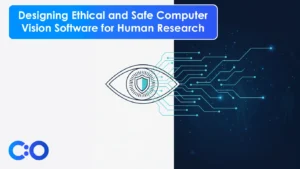

Until 1988, there was no administrative need to set up a targeted system for documenting employees’ competency in clinical laboratories. Regular performance evaluations are conducted to evaluate the performance of the clinical laboratory staff for job promotion or increase in salary. Although external proficiency testing assesses the ability to achieve the desired result for a specific object of analysis, it is not the same as competency assessment. Competency is the belief in an individual’s ability to perform according to the desired expectations. It can also be defined as the ability to perform tasks accurately and reliably and identify and solve minor problems without requiring help.
Competency assessment of employees is mandatory and is part of the accreditation programs of the College of American Pathologists (CAP), The Joint Commission (TJC), and the Commission on Accreditation of Offices and Laboratories (COLA).
The Clinical Laboratory Improvement Amendments (CLIA) 1988 classifies commercially marketed in vitro diagnostic tests into three complexity levels (waived, moderate, and high). It also defines the qualifications of laboratory personnel depending on the tests being conducted. In addition, CLIA’s ’88 personnel standards provide a way for people with different educational and training backgrounds to meet government guidelines. To validate the quality of each person working in the system, the clinical laboratory must have a way to evaluate the effectiveness of its procedures and policies to ensure employee competence.
CLIA ’88 states that the laboratory manager and supervisor have clearly defined responsibilities for the laboratory’s competency assessment program. The entire testing process should be addressed in the laboratory’s policies and procedures, including the pre-analytical, analytical, and post-analytical phases.
The CAP, part of the Laboratory Accreditation Program (LAP), provides inspection checklist guidelines that address staff training and experience, review of performance, and competency assessment. In 1996, TJC introduced a standard for hospitals to use to assess the competency of employees. The standards include measurable, demonstrated, job-specific, and age-specific competency statements. Additionally, TJC standards describe the responsibilities of laboratory management concerning assessing staff competence and ongoing learning and development. In office-based laboratories, the COLA requires the laboratory supervisor, technical consultant, or director to evaluate staff performance periodically.
CLIA ’88 states that the technical consultant of a clinical laboratory conducting moderately complex research or the laboratory supervisor in laboratories conducting highly complex research is responsible for assessing, documenting, and reporting staff competency every six months during the first year of employment. Follow-up assessments must be carried out annually unless there are changes in test methodology or instrumentation. In that case, employee performance using the new test method or instrumentation must be evaluated before reporting patient test results.
All newly recruited employees of a laboratory should attend an orientation to ensure that patient test results will not be reported until the desired skill level has been demonstrated. The orientation may include:
The Clinical and Laboratory Standards Institute (CLSI) guidelines provide a framework for laboratories to develop a training verification program. However, the time for orientation will depend on whether the staff is adequately trained and knowledgeable about the work and the number of test procedures to be mastered.
Technological developments may affect laboratory procedures or instrumentation. In addition, an organization’s mission may also change as health care evolves. To meet these challenges, continuing learning can be provided in various ways. Examples include:
The documentation of the educational event (including the topic, date of presentation, name of presenter, and name of a participator) should be kept in the employee’s file as evidence of progress towards competency.
A competency assessment should be conducted
For laboratories performing moderate or highly sensitive competency assessments, the CLIA ’88 guidelines for assessing performance are the same. Assessment of competency includes, but is not limited to:
The CAP and TJC verify whether all the six required elements are used for competency assessment. Beyond this prerequisite, CLIA ’88 does not explicitly mention how competency assessments should be conducted to preserve the laboratory manager’s flexibility to develop their respective programs. The ability to analyze, archive, and continually improve staff skills is critical to maintaining the quality of research, especially when allied health training programs are being shut down and staff reductions are occurring.
When planning a competency assessment program, laboratory managers need to define which approach suits their needs. The following should be addressed when developing an assessment plan:
The TJC criteria require an assessment of age-related competencies of the staff providing direct patient care. For example, laboratory phlebotomist practices vary according to the patient age group.
An inter-laboratory survey conducted in 2000 reflects the common practice of employee competency assessment. In this study, staff competency was assessed by test and quality control results (77.4%), direct observation (87.5%), preventive instrumentation maintenance (60.0%), and written testing (52.2%). In 77-95% of the laboratories surveyed, the competency of laboratory employees was assessed by the director/supervisor, while in 19-31% of the laboratories, it was evaluated by colleagues. Competency assessment delegation may be essential to executing the plan. If an employee failed a competency assessment, 52% of the laboratories reassessed the employee within approximately one month. On the other hand, in 8.6% of organizations, the employee was barred from carrying out usual work. Devotion to the plan was inversely related to the employees’ total number, the number of full-time equivalents, and how many supervisors were present in the laboratory. The plan was not strictly followed in teaching hospitals more than in non-teaching hospitals. This information suggests that the annual assessment of all employees may be difficult as the size and complexity of the laboratory increase.
Garcia, L. S., Bachner P., Baselski, V. S., Lewis, M. R., Linscott, A.J., Schwab, D. A., Steel Jr., J. C. H., Weissfed, A., Wilkinson, D. S., & Wolk, D. M. (Eds.). (2014). Clinical laboratory management (2nd ed.). Washington, DC: ASM Press.
